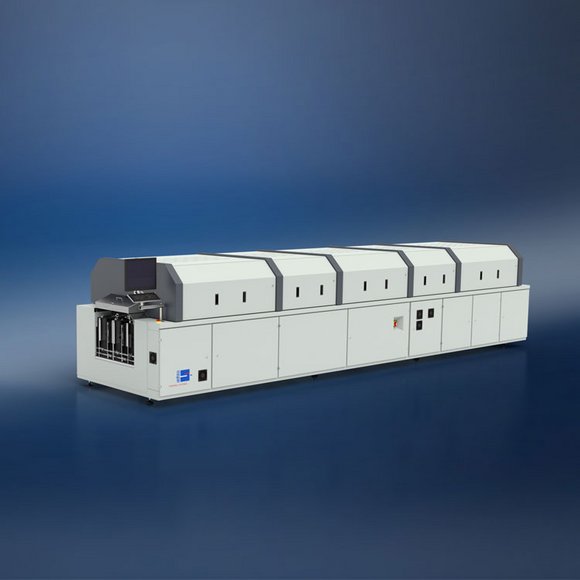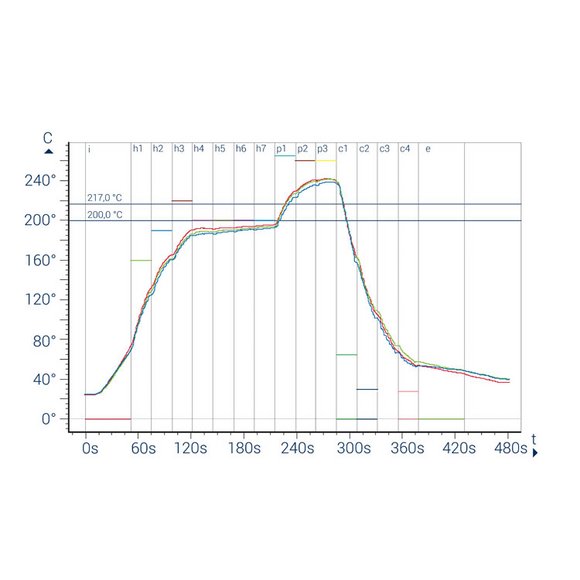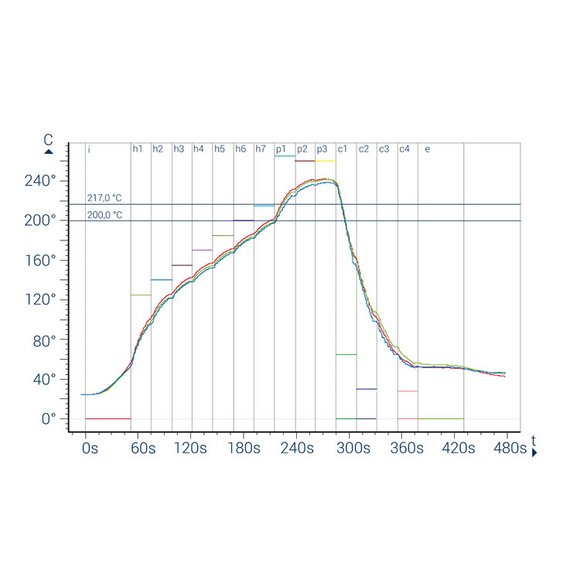In the VisionXP+, the nozzle hole fields, which have a special geometry, ensure an even flow onto the assemblies. The temperature and the flow speeds of the upper and lower heating zones are individually adjustable. This means that the assembly is heated fully and evenly.
In addition, the profiling can be influenced thanks to the infinitely variable transport speed. The aim of this is to find an optimum setting at which smaller components do not overheat and larger components are still heated sufficiently to ensure reliable soldering.
The optimum properties of the VisionXP+ in the area of heat transfer enable problem-free and reproducible profiling, including in the form of a saddle profile or linear profile, to help achieve the best soldering results. The respective profile is generally selected on the basis of the solder paste being used.
Saddle profile
With a saddle profile, the assembly is first brought to the desired temperature in the pre-heating area. At this temperature (saddle), the paste is activated and the temperatures of the different thermal masses of the assembly are aligned. Then soldering takes place in the short peak range of the furnace.
Linear profile
With a linear profile, the assembly is not stepped during soldering, but is heated with exactly the same linear temperature increase. Linear profiles may lead to the cycle time becoming shorter and to the minimisation of soldering errors, such as tombstoning.
Through circulation within a VisionXP+ system, the process gas is extracted from the pre-heating and peak range at the side, cleaned and reintroduced into the process. In order to create a stable thermodynamic state in the system and to keep the energy loss to the outside as low as possible, the VisionXP+ features optimum insulation between the process chamber and the environment.


